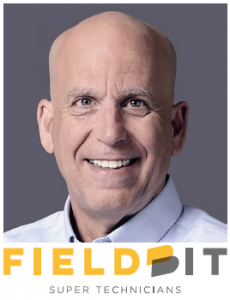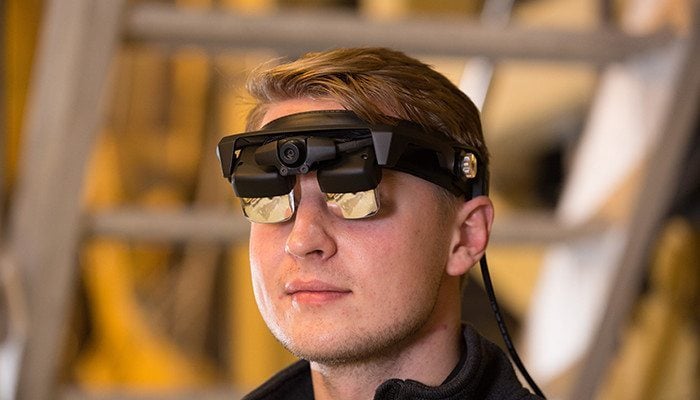The Big Discussion: Augmented Reality (part 2)
May 24, 2017 • Features • Augmented Reality • Future of FIeld Service • Niklas Rengfors • XM reality • Big Debate • David Nedohin • Evyatar Meiron • FieldBit • ScopeAR
Last week we launched a new feature called the Big Discussion where we take one topic, bring together three leading experts on that topic and put four key questions to them across four weeks, to help us better understand its potential impact on the field service sector...
Our first topic is Augmented Reality and our experts are Evyatar Meiron, CEO, Fieldbit, Niklas Rengfors, Head of Sales & Marketing, XM Reality and David Nedohin, President, ScopeAR...
Last weeks question was Just how big an impact can and will Augmented Reality have on field service delivery? Check out our panel's answers here if you missed them
and now onto next weeks question in the Big Discussion
Question Two: What advantages does Augmented Reality offer over video calls such as FaceTime and Skype etc?
 David Nedohin, President, ScopeAR
David Nedohin, President, ScopeARUnlike a video call, augmented reality offers the ability to overlay specific content (animated instructions, annotations, drawings, 3D content, graphics, text, etc.) onto the real-world and have it “stick” to the part or area being referenced. Using AR, field workers can visualise content, such as predefined instructions, on top of a piece of equipment they’re assembling or repairing to show exactly the right steps, regardless of previous training.
Another advantage that AR presents is that it facilitates more efficient and effective knowledge transfer from a subject matter expert in real-time -- who may be located at the company’s headquarters or a call center -- to the remote worker. With an AR-enabled video calling platform, an expert can collaborate with a colleague out in the field, seeing what they’re seeing in real-time and simulate an “over-the shoulder” view of having someone walk the field worker through the correct procedure.
For example, while viewing a live video stream of a machine undergoing maintenance, an expert could use augmented reality to circle a bolt in real-time and tell the technician in the field to remove it. And with today’s AR technology, the correct bolt would stay circled even as the technician moves around, allowing for an unprecedented level of interaction between the expert and technician. Instead of just “telling” a worker how to do something, the expert can now “show” them and then document that conversation.
 Evyatar Meiron, CEO, Fieldbit
Evyatar Meiron, CEO, FieldbitReal-time video can be useful for remote diagnostics, allowing the technician to transmit video from the faulty machine to an expert off-site. Effective field service, however, requires two-way data transfer beyond the capabilities of video.
Augmented reality allows the flow of knowledge from the expert to the technician or user on site. It enables the quick addition of context-sensitive information, such as text annotations, diagrams and other messages, on top of the live video so technicians can zero in on how to fix the machine.
Another key advantage is knowledge capture. Advanced augmented reality platforms, such as Fieldbit, accumulate practical knowledge related to service and repair processes by recording all actions and information exchanged between experts and the field technician.
All visual records, including augmented reality, are stored and are retrievable from a central repository, allowing information to be shared and re-used across the organisation.
 Niklas Rengfors, Head of Sales & Marketing, XM Reality
Niklas Rengfors, Head of Sales & Marketing, XM RealityAt XMReality we are focusing on industrial users and field service. We have taken experience and put it into features that match customer needs.
We have seen impacts on our low bandwidth functionality and also since we add AR, problems are solved quicker and more efficient and more accurate.
The customisation and integration part we offer also comes into play our discussions with our customers.
Next weeks question: Do you see Augmented Reality ultimately becoming a standard tool included within wider FSM solutions or should it be viewed as a specialist standalone application?





















 Field Service News is published by 1927 Media Ltd, an independent publisher whose sole focus is on the field service sector. As such our entire resources are focused on helping drive the field service sector forwards and aiming to best serve our industry through honest, incisive and innovative media coverage of the global field service sector.
Field Service News is published by 1927 Media Ltd, an independent publisher whose sole focus is on the field service sector. As such our entire resources are focused on helping drive the field service sector forwards and aiming to best serve our industry through honest, incisive and innovative media coverage of the global field service sector.
Leave a Reply